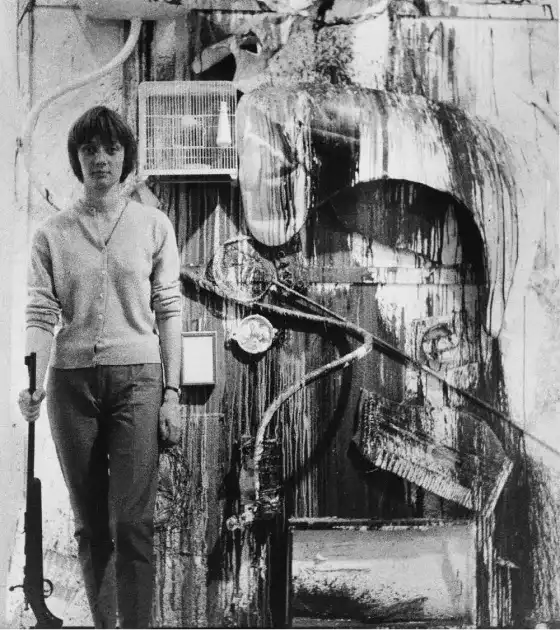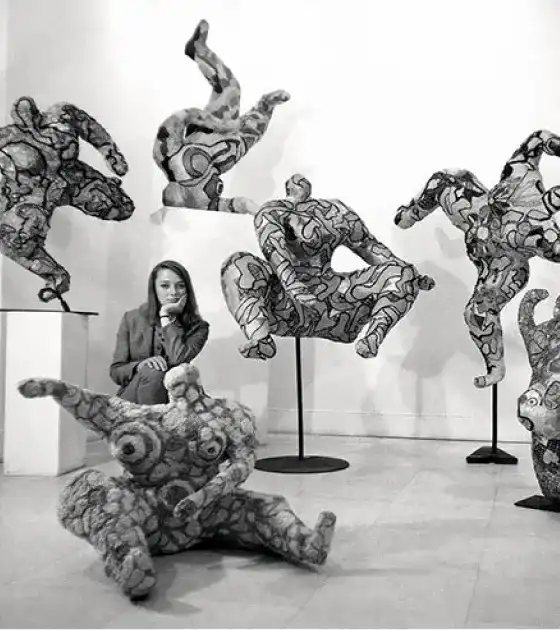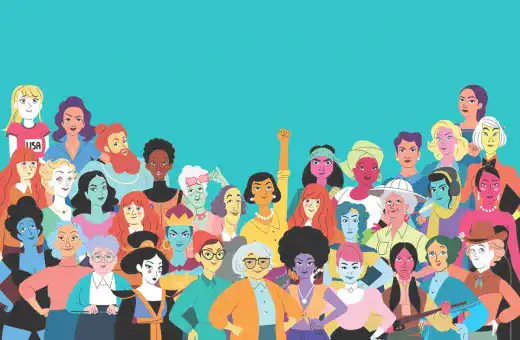Many women and men have impacted the world with their ideas for feminism. We can notice that a small group stands out. This small group stands out because of the way they transmit their ideas. They are the artists. They give to see visuals as vector of their ideas. Because to be an artist is to transmit ideas, emotions or values with visual means. These are elements that remain in the memory, more than a text.
A feminist art history
Who is this artist?
Amongst these artists, one in particular has made an impact by the way she conceived her visuals to convey her ideas. This person is Niki de Saint Phalle, French-American artist and activist born in 1930. The particularity of this artist is that all her works are related to a precise theme. This one is the refusal of the codes which were dictated to him on how to behave as a woman. But also her refusal of machismo. She explains that already very young, she refused to conform to the codes that her mother wanted to instill in her. She did not want to be this good woman, who takes care of the house and does not study. A woman educated for the family needs and to get married. She didn't want that, she wanted to be like the men. So she created a generational break in the behavior that a woman should have. She also explains that she understood very early that men had power and that she wanted that power. But also that she would not limit herself to the limits that society put on her because she was simply a woman

Her work
The beginning
This is how she began to make works. In 1961 the first works and performances with feminist connotations made their appearance. Her entry into the art world in 1961 was striking. Why was this? Because of the photo of her with a 22 Long Rifle aiming her work. She had the idea of shooting paint on her sculpted white plaster paintings. The principle? She imagined making the work bleed, wounding it as a person can be wounded. She ended her performances by using tear gas to symbolize war, revolt. After two years, the artist stopped her performances. These made her enter a kind of ecstatic trance and made her dependent. This period was "scandalous" in the eyes of the world, she explains in a letter to an artist friend.

No more extravagance
Then, she changed her way of producing visuals. No more rebellion. She began more intimate works. Works representing the woman, her different roles. She wanted to show what roles the women of her time held. She came to create works showing the suffering of women. To denounce by the setting in exergue of the female pain. The hard reality of her daughters, mothers or prostitutes who are finally only simple merchandise to which one prevented the free choice of their desires. Through these works, she shows brides with pale tints, women torn apart or even women who give birth with countless drips. Showing the reality of things rather than hiding it. This is what she has tried to do in her works.

Finally, Niki comes to that period that most people today know as the "NANAS". These good women high in shape and color. These sculptures with generous shapes exceeding the measurements of a man to stand up to them, full of colors and circular patterns that emphasize the forms. Here the artist wants to show the celebration of femininity, to show how women should be. These shock in public spaces but are a bit like the saviors of human women. From a message of femininity to an anti-segregationist message, she creates new chicks but this time black to show her support to all women. Because the feminist fight is the fight of every woman.

Niki de Saint Phalle was thus ahead of her time in terms of reflection and led an intersex struggle on a monumental scale with her Tarot Garden project for example.
She crossed the XXth century as a precursor or on the fringe of the feminist movements.
What is certain is that :Niki de Saint Phalle, an amazon who knew how to assume the violent revolt of an entire era through her own [and whose] immense work is ready to face the centuries to come.
Quote from Pierre Restany.
Timeline of feminism

Feminist artistic expression today
The world is changing, so is art and the feminist struggle. How is feminism transmitted today?

Art and feminism closer to young people
The young generation is a hope for change. We have seen this with global warming. What about feminism?
Video
Discover a situation of feminism in this video


